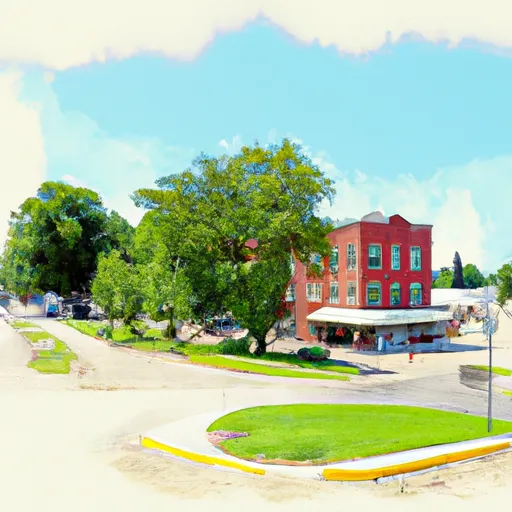-
 Snoflo Premium
Snoflo Premium
Get unlimited access to all our content
With no Ad interruptions! - Start Your Free Trial Login with existing account
Comstock
Eden Index
Climate
5.5
•
Recreation
3.1
•
Community
•
Safeguard
3.3/10

Comstock is a small town in Clay County, Minnesota with a population of just over 100 people. The climate in Comstock is characterized by cold winters with an average temperature of 10°F and warm summers with an average temperature of 70°F. The town is located near the Buffalo River, which contributes to the area's hydrology constituents. There are a variety of outdoor recreation opportunities available in Comstock, including hunting, fishing, camping, and hiking. The nearby Buffalo River State Park offers opportunities for birdwatching, swimming, and canoeing, while the Tamarac National Wildlife Refuge is a popular destination for wildlife viewing and nature photography. Overall, Comstock is a great place for nature enthusiasts and those looking for a quiet, rural lifestyle.
What is the Eden Index?
The Snoflo Eden Index serves as a comprehensive rating system for regions, evaluating their desirability through a holistic assessment of climate health, outdoor recreation opportunities, and natural disaster risk, acknowledging the profound impact of these factors on livability and well-being.
Climate Health Indicator (CHI): 5.5
Comstock receives approximately
589mm of rain per year,
with humidity levels near 81%
and air temperatures averaging around
6°C.
Comstock has a plant hardyness factor of
4, meaning
plants and agriculture in this region thrive during a short period during spring and early summer. Most
plants will die off during the colder winter months.
By considering the ideal temperature range, reliable water supplies, clean air, and stable seasonal rain or snowpacks, the Climate Health Indicator (CHI) underscores the significance of a healthy climate as the foundation for quality living.
A healthy climate is paramount for ensuring a high quality of life and livability in a region, fostering both physical well-being and environmental harmony. This can be characterized by ideal temperatures, reliable access to water supplies, clean air, and consistent seasonal rain or snowpacks.
Weather Forecast
Streamflow Conditions
Upper Red
Area Rivers
Upper Red
Snowpack Depths
Upper Red
Reservoir Storage Capacity
Upper Red
Groundwater Levels
Recreational Opportunity Index (ROI): 3.1
The Recreational Opportunity Index (ROI) recognizes the value of outdoor recreational options, such as parks, hiking trails, camping sites, and fishing spots, while acknowledging that climate plays a pivotal role in ensuring the comfort and consistency of these experiences.
Access to outdoor recreational opportunities, encompassing activities such as parks, hiking, camping, and fishing, is crucial for overall well-being, and the climate plays a pivotal role in enabling and enhancing these experiences, ensuring that individuals can engage in nature-based activities comfortably and consistently.
Camping Areas
| Campground | Campsites | Reservations | Toilets | Showers | Elevation |
|---|---|---|---|---|---|
| Chahinkapa Park | 6 | 956 ft | |||
| Lindenwood Park | 60 | 904 ft | |||
| Island Park - Argyle | 22 | 844 ft | |||
| Kidder Rec Area | 8 | 956 ft | |||
| Marshall County Park at Florian | 104 | 930 ft | |||
| Northwest Acres | 22 | 827 ft | |||
| Lions Club Park - Stephen | None | 831 ft | |||
| Welles Memorial Park | 5 | 953 ft |
Catastrophe Safeguard Index (CSI):
The Catastrophe Safeguard Index (CSI) recognizes that natural disaster risk, encompassing floods, fires, hurricanes, and tornadoes, can drastically affect safety and the overall appeal of an area.
The level of natural disaster risk in a region significantly affects safety and the overall livability, with climate change amplifying these risks by potentially increasing the frequency and intensity of events like floods, fires, hurricanes, and tornadoes, thereby posing substantial challenges to community resilience and well-being.
Community Resilience Indicator (CRI):
The Community Resilience Indicator (CRI) recognizes that education, healthcare, and socioeconomics are crucial to the well-being of a region. The CRI acknowledges the profound impact of these elements on residents' overall quality of life. By evaluating educational resources, healthcare accessibility, and economic inclusivity, the index captures the essential aspects that contribute to a thriving community, fostering resident satisfaction, equity, and social cohesion.

